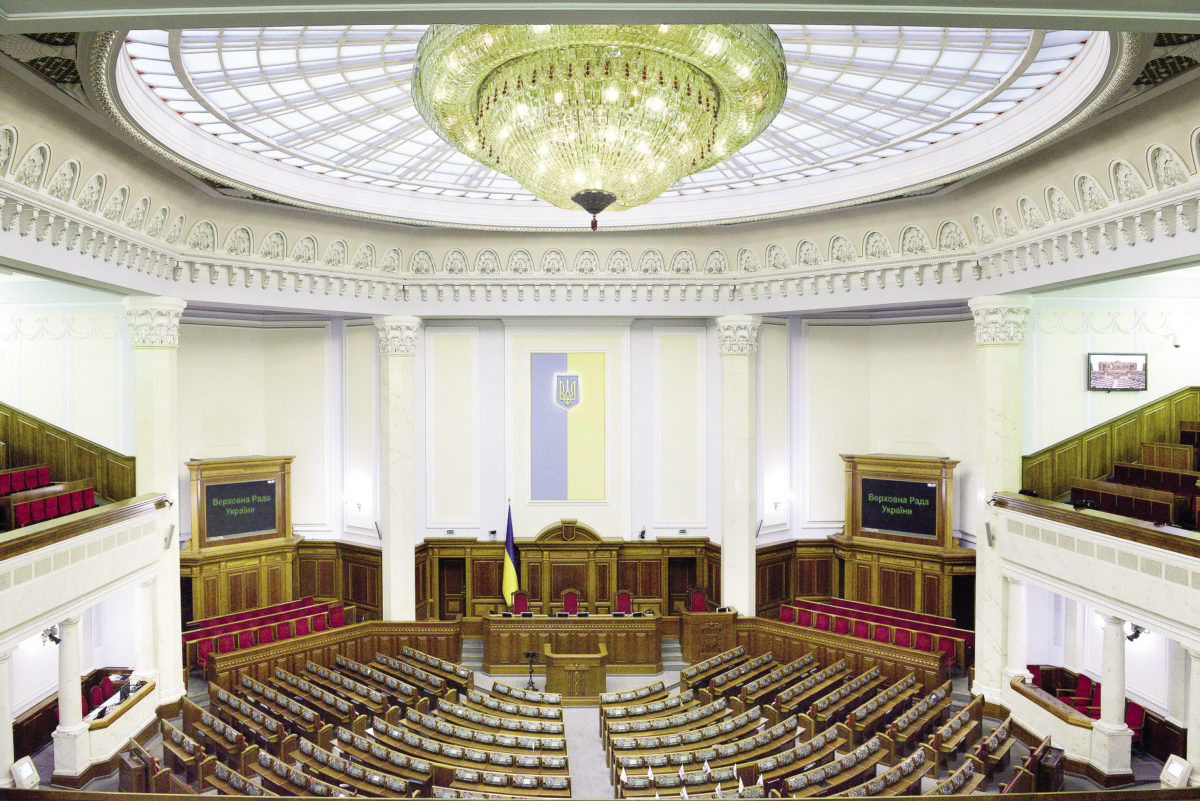The passage of Ukraine’s Draft Law 3658 – which confirms retroactive cuts to previously signed renewable energy feed-in tariffs (FITs) – is set to soften the blow further than originally suggested for solar project developers.
However the bill, which yesterday passed its second and final reading before adoption by the parliament – and which may still be subject to amendments to the final text – no longer features a mooted extension to the lock-in period for the new FITs suggested beyond 2029 and still hammers some solar project owners more than their wind counterparts.
Whereas wind turbines with a generation capacity of more than 2 MW would see FIT payments reduce by 7.5% for projects commissioned between July 1, 2015 and the end of last year – and just 2.5% for plants started until the end of 2022 – the owners of some solar projects commissioned from November onwards face reductions of up to 60% in what they might previously have expected. That steepling fall will apply to solar plants with a generation capacity of more than 75 MW commissioned in the final two months of this year, which will receive €0.045/kWh; and solar farms of the same size commissioned next year, which will qualify for €0.0435. The owners of ground-mounted solar projects of up to 75 MW will swallow a 30% reduction on what could previously have been anticipated, to €0.0788/kWh in the final two months of this year and €0.0762 in the first quarter of next year, rising to that 60% reduction to a blanket €0.0435 to the end of next year.
FIT closure
From 2022 on, no FIT will be available for 1 MW-plus ground-mounted solar projects as an auction regime is set to be introduced next year which will fix agreed solar electricity tariffs for 20 years.
In terms of retroactive FIT reductions, developers with signed PPAs for 1 MW-plus solar projects will face a 15% reduction in payments, to €0.1441/kWh for facilities commissioned from July to the end of 2015; €0.1359 for 2016 facilities; and €0.1277 for projects started up to the end of last year. Facilities commissioned until the end of October this year will have a 2.5% reduction, to €0.1097. Smaller – up-to-1 MW – ground-mounted plants commissioned to the end of last year face a 7.5% fall in payments, to €0.1569/kWh for July to the end of 2015; €0.1479 for 2016; and €0.1389 for 2017-19 projects. The reduction will be 2.5% for projects commissioned this year, to €0.1097/kWh.
Smaller projects will qualify for a FIT of €0.042/kWh from 2022 on, with the payment level set to reduce at intervals from that point and solar and wind projects commissioned before July 1, 2015 will have their maximum FIT capped at €0.22/kWh.
Curtailment
Developers can at least be reassured electricity transmission system operators will now have to compensate them in return for any curtailment orders issued. However, it is notable the obligation will not apply in force majeure situations, which may well include further Covid-19 outbreaks.
Concerns over the government’s ability to finance the newly revised FIT levels were addressed by the announcement Kyiv intends to issue bonds for the purpose within three months of the new regime being signed into law by president Volodymyr Zelensky.
The legislation is also notable for increasing the bonus added to FIT or auction tariff prices for the use of Ukrainian-made solar equipment. The 5% bonus available for using at least 30% local components – rising to 10% for at least 50% Ukrainian equipment – will remain unchanged, but projects which feature at least 70% domestic components will see their bonus rise to 20%.
Ukrainian renewable energy legal counsel Svitlana Teush has taken a closer look at the legislation for pv magazine.
This content is protected by copyright and may not be reused. If you want to cooperate with us and would like to reuse some of our content, please contact: editors@pv-magazine.com.




1 comment
By submitting this form you agree to pv magazine using your data for the purposes of publishing your comment.
Your personal data will only be disclosed or otherwise transmitted to third parties for the purposes of spam filtering or if this is necessary for technical maintenance of the website. Any other transfer to third parties will not take place unless this is justified on the basis of applicable data protection regulations or if pv magazine is legally obliged to do so.
You may revoke this consent at any time with effect for the future, in which case your personal data will be deleted immediately. Otherwise, your data will be deleted if pv magazine has processed your request or the purpose of data storage is fulfilled.
Further information on data privacy can be found in our Data Protection Policy.